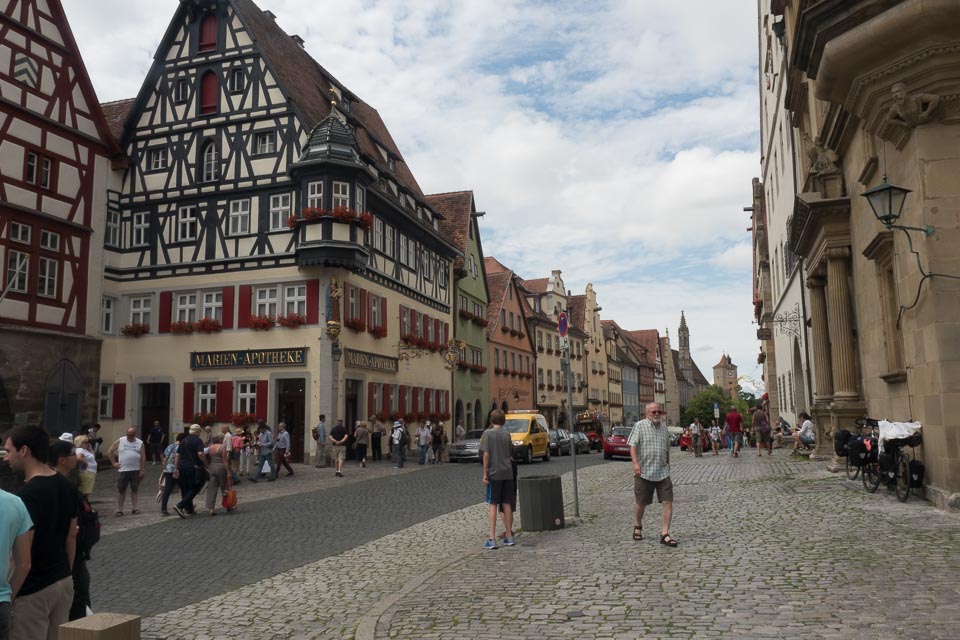It's June 25, our anniversary. This was suppose to have been a day of relaxation while cruising the "W" part of the Main River. Then we discovered that a day trip was available to Rothenburg, so off we went. On the way our guide pointed out what he believed was the world's largest thimble. Maybe it is.
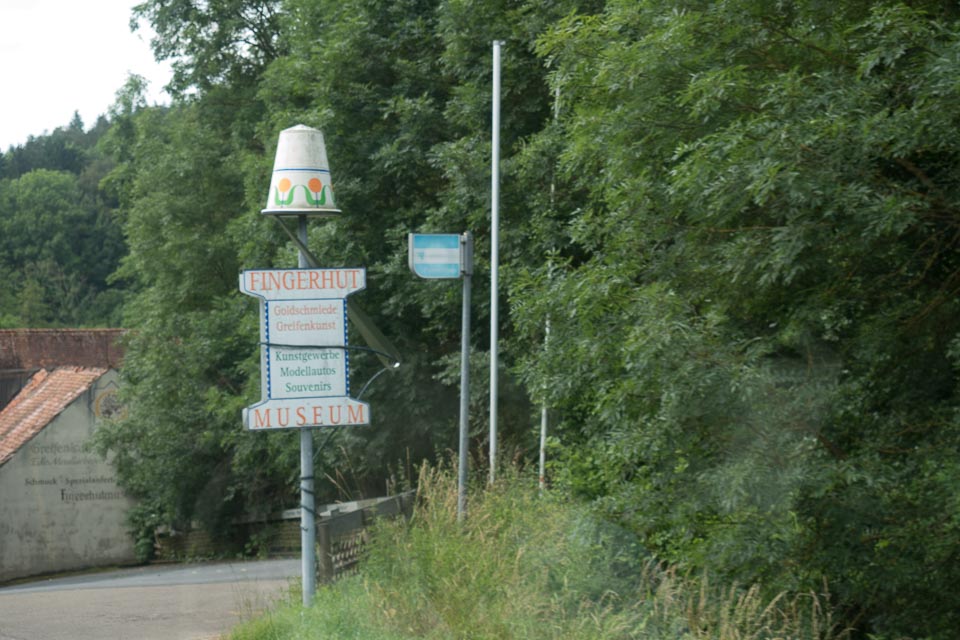
Speaking of our guide. Our guide was Charles. This is Charles. He was quite a character as well as an excellent guide. You know how tour guides normally walk around carrying those little signs or umbrellas they hold up so their entourage will know where they are? Not Charles. He didn't need anything to let us know where he was. His outfit was enough. We thought we were the tourists doing all of the looking, but everywhere we went, heads turned and everybody was looking at us, no doubt wondering why we were all following that man around.

The city's pedestrian entrance.

The city's main street going up the hill to the town square.

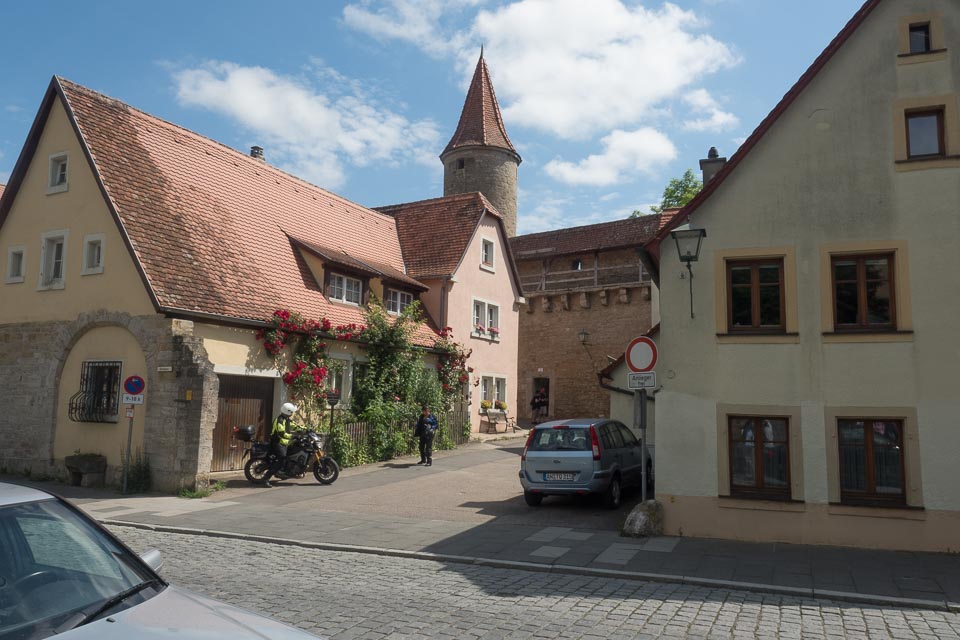
Talk about a narrow little side alley!

The city wall is in the background. We will be up there right after lunch.
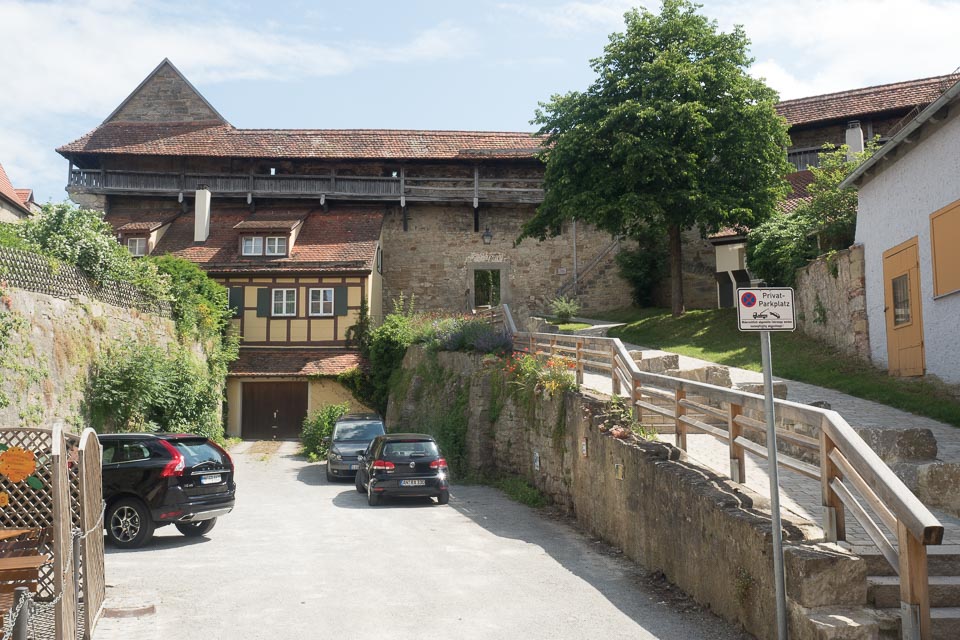
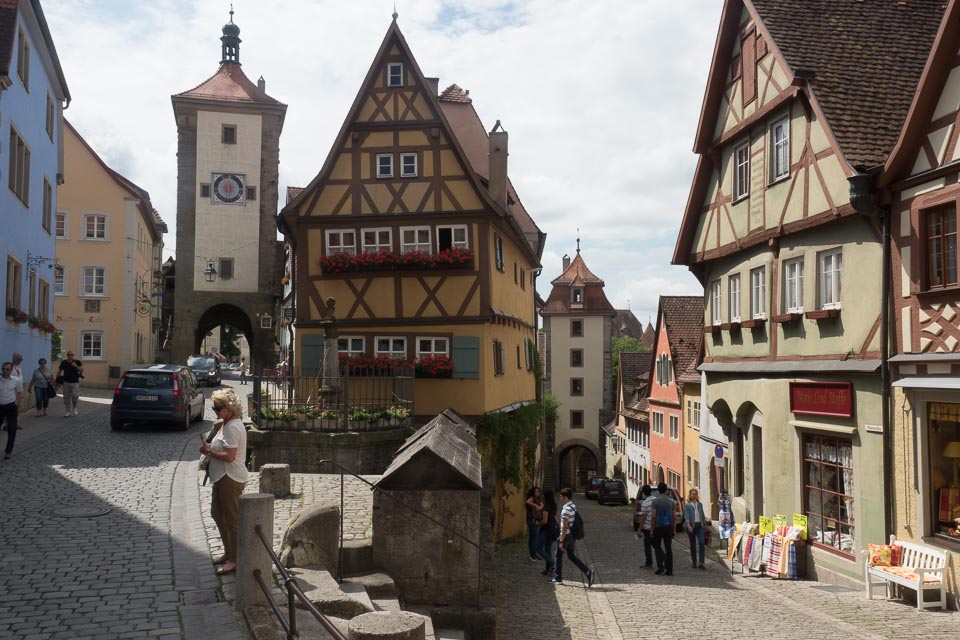
Charles in a very good place.

According to Charles, these were the carriages used to transport the children in the "Sound of Music."

The detail continues to amaze. You think you're looking at a rather ordinary building and then you notice the ornate statues.
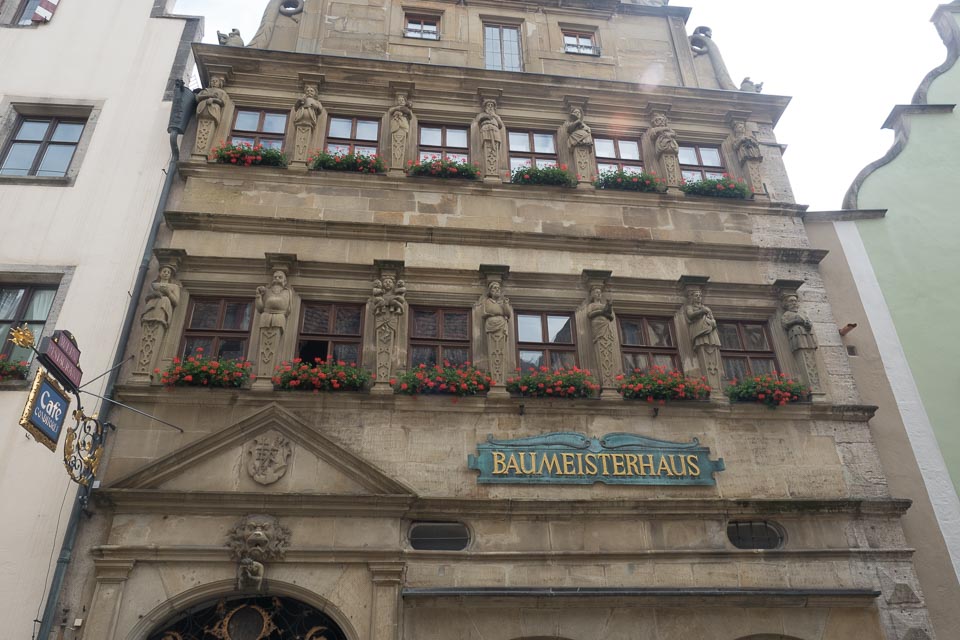
The combination of masonry and wood is striking. I love the story one guide told about this architecture. Originally all of the buildings were made of wood. That was the only material available and it was susceptible to fires. As masonry became available in common construction, wealthy people who could afford it integrated it into their designs, making an artistic combination of wood and masonry. The design was a symbol of wealth. But as the wealthy became wealthier and could afford it, construction went to all masonry. Then, if someone built the wooden and masonry combination, they were now thought of as being poorer and unable to afford the best.
